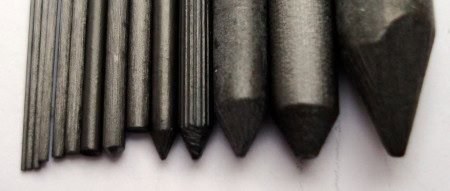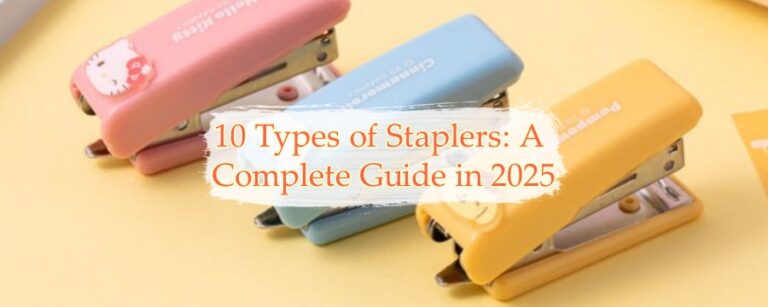Mechanical pencils, also known as automatic or propelling pencils, have evolved significantly since their creation. Initially developed in the 18th century to hold and extend a graphite stick, these early mechanical pencils were simple devices that gradually became more sophisticated. By the 19th century, advancements in manufacturing led to the mass production of mechanical pencils with various mechanisms for advancing the lead. In the 20th century, they introduced innovations such as plastic components, eraser-tipped models, and refillable pencil lead cartridges, enhancing convenience and functionality.

Central to the evolution of mechanical pencils is the development of the pencil lead itself. Early leads were made of pure graphite, but modern mechanical pencil leads are composed of a mixture of graphite and clay, allowing for a range of hardness grades from very soft to very hard. This evolution in lead composition has dramatically expanded the applications of mechanical pencils, from creating delicate technical drawings to producing bold, artistic sketches. Additionally, the introduction of colored and polymer-based leads has further diversified the capabilities and uses of mechanical pencils, making them an indispensable tool for professionals and artists alike.
Different sizes of Mechanical Pencil Lead
Mechanical pencil leads come in various sizes, each catering to different needs and preferences. The size of the lead, typically measured in millimeters, determines the thickness of the lines it produces, making it an essential factor in choosing the correct lead for your specific task.
From ultra-fine leads ideal for detailed technical drawings to thicker leads perfect for bold sketches, the range of available sizes ensures a mechanical pencil lead suited for every purpose. Understanding these sizes can significantly enhance your writing or drawing experience, allowing for greater precision and versatility in your work.

- 0.2 mm: Extremely fine, ideal for detailed technical drawings and precise writing.
- 0.3 mm: Very fine, suitable for intricate details in drafting and fine line work.
- 0.4 mm: Fine, balancing precision and visibility for technical and detailed work.
- 0.5 mm: The most common size, versatile for everyday writing and general drawing.
- 0.7 mm: Slightly thicker, preferred for writing and drawing that require more durable and bolder lines.
- 0.9 mm: Thicker lead, suitable for sketching and writing where broader lines are needed.
- 1.15 mm: Moderately thick, used for bold writing and sketching that require precise, visible lines.
- 1.3 mm: Quite thick, used for bold lines in sketching, marking, and shading.
- 1.8 mm: Thick, suitable for heavy lines in sketching, artistic applications, and marking.
- 2.0 mm: Extra thick, often used in clutch pencils for sketching, shading, and art applications.
- 3.2 mm: Very thick, ideal for bold, expressive lines in artistic work and large-scale drawings.
- 5.6 mm: Extremely thick, used for broad strokes in art, shading large areas, and specialized marking tasks.

These sizes offer users a range of options to match their specific needs, from delicate technical work to bold artistic expressions.
Different hardness of Mechanical Pencil Lead
Mechanical pencil leads come in various hardness grades, similar to traditional wooden pencils, allowing users to choose the best lead for their needs. The hardness of the lead affects the darkness and durability of the lines it produces. Here are some common hardness grades:

Hard Leads (H Grades):
Characteristics: Produce fine, light lines that are less prone to smudging.
Usage: Ideal for detailed technical drawings, drafting, and precise line work.
Examples: H-9H

Medium Leads (HB Grade):
Characteristics: Offer a balanced performance, providing medium-dark lines.
Usage: Suitable for everyday writing and general-purpose drawing.
Examples: HB

Soft Leads (B Grades):
Characteristics: Create rich, dark lines that are excellent for shading and sketching.
Usage: Perfect for artistic work, such as shading, sketching, and expressive drawings.
Examples: B-9B
By understanding and selecting the appropriate hardness grade for your mechanical pencil lead, you can tailor your writing or drawing tools to suit specific tasks, enhancing the quality and efficiency of your work.
Different Types of Mechanical Pencil Lead
Mechanical pencil leads come in various types, each designed for specific purposes and user preferences. Here are some common types:
Mechanical Pencil Cores
- Standard Graphite Cores: The most common type, available in various hardness grades from very soft (9B) to very hard (9H). Suitable for general writing, drawing, and technical work.
- Polymer Graphite Cores: Made from a mixture of graphite and polymer, these cores are more durable and less prone to breaking, offering a smoother writing experience.
Colored Leads
- Standard Colored Leads: Available in various colors such as red, blue, green, and more. They are used for color-coding, drawing, and highlighting.
- Water-Soluble Colored Leads: These can be blended with water to create watercolor effects, which are ideal for artistic work.
Specialty Leads
- Mechanical Chalk Leads: Thicker and softer leads mark wood, metal, and glass surfaces.
- Non-Photo Blue Leads: Light blue leads that do not appear are commonly used in drafting and comic book illustrationillustrationseads: These are used by artists for rich, dark lines and shading.
- Carbon Leads: Blend graphite and carbon for deeper, darker lines than standard graphite.
- Ultra-Fine Leads (e.g., 0.2 mm, 0.3 mm): Highly detailed work, such as technical drawings and delicate writing tasks, is ideal.
These mechanical pencil leads cater to different needs, from everyday writing and detailed technical work to artistic drawing and specialized marking tasks.
How to use automatic pencil leads
Using mechanical pencil leads is straightforward and involves simple steps to ensure smooth operation. Here’s a guide on how to use them:

Open the Pencil
To begin, take your mechanical pencil and determine how it opens. Many mechanical pencils have a cap or an eraser at the top that can be gently pulled off to reveal the lead chamber. In other designs, you might need to twist the pencil body or barrel to separate the two halves. This twisting motion usually unscrews the pencil, allowing access to the inner chamber where the leads are stored.

Insert the Lead
Once the pencil is open, take a piece of lead and carefully insert it into the chamber. Ensure the lead is aligned correctly with the opening to avoid jamming or breakage. Most mechanical pencils are designed to hold multiple pieces of lead, allowing you to load several simultaneously. Gently push the lead into the chamber until it is securely in place.

Click the Button
Locate the button on your mechanical pencil to advance the lead, usually found at the end or side of the pencil. Pressing this button is how you control the extension of the lead. With each button click, the internal mechanism will push the lead forward a tiny amount, allowing you to expose the correct lead length for writing or drawing.

Advance as Needed
It’s essential to click the button gently and incrementally to avoid advancing too much lead at once, which can lead to breakage. As you press the button, you should hear a slight click, indicating that the lead has moved forward. Continue clicking until the desired lead length is extended, ensuring a comfortable and efficient writing or drawing experience.
Please note:
Use All Leads: When the last piece of lead is used up, repeat the loading process.
Clear Jams: Remove the blockage using a thin wire or needle if the lead gets jammed.
Protect the Tip: To avoid breaking the lead, retract it fully when not in use.
Refill Regularly: Keep extra leads on hand to refill as needed.
Honeyoung, a stationery supplier, recommends you follow these steps to ensure that your mechanical pencil functions smoothly, providing consistent and reliable performance for writing, drawing, or technical work.
FAQ
What do the different hardness grades of mechanical pencil leads mean?
Hardness grades range from complex (H grades, 9H to H) to soft (B grades, B to 9B). HB is a medium grade. More complex leads produce lighter, finer lines and are less prone to smudging, while softer leads produce darker, bolder lines but may smudge more easily.
What are the benefits of using polymer graphite leads?
Polymer graphite leads are more durable and less prone to breaking than traditional ones. They also provide a smoother writing and drawing experience.
What are pencil leads made of?
Pencil leads are primarily made of graphite and clay. The graphite provides the dark marks, while the clay adds hardness and durability.
To know more about pencil lead, please check: Is Pencil Lead Toxic? The Most Comprehensive Answer.
How do I prevent my mechanical pencil lead from breaking?
To prevent lead breakage, avoid applying excessive pressure while writing or drawing. Use the appropriate lead size for your pencil and ensure the lead is loaded correctly.
Can I refill my mechanical pencil with any lead size?
No, you should use the lead size specified for your mechanical pencil. Using the wrong size can cause jams or malfunctions. Check the specifications of your pencil before purchasing leads.
How do I clear a jammed lead from my mechanical pencil?
To clear a jam, carefully remove the lead from the tip using a thin wire or needle. Disassemble the pencil to access the lead chamber and clear the blockage if necessary.
Can mechanical pencil leads be recycled?
Mechanical pencil leads are not typically recyclable, but the plastic or metal body may be. Check with local recycling programs for specific guidelines.













One Response
I always accidentally break the lead wire….